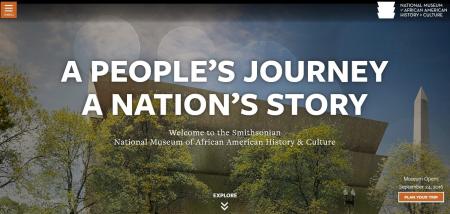Last month, curatorial staff at the National Museum of African American History and Culture (NMAAHC) contacted the Smithsonian Institution Archives to discuss plans for documenting social media related to the opening of the museum on September 24. We were asked, “How have you documented museum openings in the past?” In short, the answer was “Not like this.”

Documentation of museum openings in the past typically consisted of photographs, audiovisual recordings, press releases, press packets, newspaper clippings, ceremonial programs, brochures, and other publications. The museum would collect these materials and eventually transfer them to the Archives, sometimes decades after the opening.

Many of these materials (and much, much more) are now disseminated to the public electronically via websites and social media, such as Twitter, Facebook, Tumblr, and Instagram, and may not exist in paper format at all. They also may only exist for a very short time online. Time-sensitive website content can be overwritten quickly. If an account is particularly active, social media posts can easily get buried beyond the reach of any web capture tools. Content on platforms such as Snapchat and Periscope will disappear almost immediately unless the account holder takes measures to save it.
Over the past few weeks and likely for a few more, staff from the Archives and the National Museum of African American History and Culture have been working together to ensure that much of the online content related to the opening of the museum is being captured for historical purposes while it is still live on the web. This includes content distributed via the museum’s website and official social media accounts as well as that distributed via other Smithsonian museums and even Tweets by others using the hashtags promoted by the museum.

The Archives has used portions of this approach for major Smithsonian events over the past few years, such as the arrival of the space shuttle Discovery at the Udvar-Hazy Center in 2012, the Smithsonian Summer Showdown contests in 2014 and 2015, and the reopening of the Cooper Hewitt, Smithsonian Design Museum in 2014. To date, the opening of the National Museum of African American History and Culture is the largest-scale online media and communication campaign that the Archives has attempted to document.
Related Resources
Smithsonian NMAAHC (@NMAAHC), Twitter, National Museum of African American History and Culture
National Museum of the American Indian in Washington Marks 10th Anniversary, The Bigger Picture, Smithsonian Institution Archives
NASM's Udvar-Hazy Facility Marks 10 Years, The Bigger Picture, Smithsonian Institution Archives
Produced by the Smithsonian Institution Archives. For copyright questions, please see the Terms of Use.

Leave a Comment